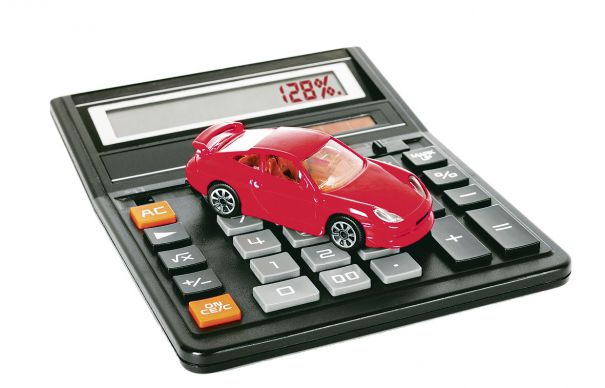Getting State Farm car insurance for your used vehicle can help you meet state insurance requirements and protect you and your family in the event of an accident. Used car insurance coverage options are generally similar to those for new car insurance, but a few details like best coverage levels and savings opportunities are different. Understanding these comparisons enables you to get the right type and level of coverage from State Farm.
Car Insurance Basics for your used Car
Your insurance premium calculations stem from a combination of factors, including:
- The risk profile State Farm assigns to you based on your driving history, usage, certain personal characteristics (like your age) and where you live
- The risks in insuring your car and its value based on make, model, age and current mileage
- The types of coverage you want/need
- The levels of deductibles you choose
- Any discounts offered by the insurer in your state
These all apply just as much for used cars as for new. Regardless, you may want to select different coverage options and levels for your used car than you would for a new car.
One benefit of insuring a used car worth noting is that in most cases, State Farm rates for older vehicles are lower because of the lower cost of any insurance claims generally filed on used car insurance coverage.
Required Coverage
Basic, state-mandated insurance typically includes bodily harm and property liability coverage. These two components cover some of the costs if you are at fault in an accident that damages another person’s property or causes them (or their passengers) bodily harm. Every car needs insurance that meets state minimums for each of those types of coverage. These minimums are usually not enough to keep you financially safe if you do have an accident.
For example, Georgia requires drivers to have personal injury liability coverage of $25,000 per person and total accident coverage of $50,000 in bodily injury liability. That means that if you cause an accident and an injured person needs $500,000, they may be able to sue you for the difference ($475,000.) It’s just one reason why most people get coverage several times higher than the state minimum.
In some states you are also required to have uninsured/underinsured motorist coverage. This covers some of the repair costs to your property if you have an accident where the other motorist is at fault but doesn’t have enough (or any) insurance. You might opt for less or none of this coverage depending on the value of your used car to save on the premium if it isn’t required by the state. (One thing to note is that in some states, if you do opt to put this coverage in place, the state will require you to have just as much uninsured/underinsured coverage in place as you do liability.)
With any state-required level of car insurance, don’t make the mistake of thinking that just because you have a used car you can skimp in these coverage levels. If you’re insuring your used car with State Farm they will actually give you a better base rate for increasing your levels of coverage for state-required options.
Additional Types of Coverage
Many drivers want to protect their own property (especially their cars.) Adding a collision option will cover repair costs for your car in an accident you cause. A comprehensive option pays for damage done to the car outside of a collision such as in the event of theft, vandalism, car fires or floods, or even severe weather.
Medical payment or personal injury protection (PIP) options typically pay for the medical expenses you or a passenger might incur if an accident (regardless of who is ultimately found at fault.) These options are required by a number of no fault car insurance states.
You can save on your State Farm used car insurance premium by increasing deductibles for optional features such as comprehensive and collision coverage. A higher deductible means State Farm will deduct a larger amount from the total they pay to you for an insurance claim. For example, if you anticipate not caring about minor cosmetic damage to your used car, you don’t need a low comprehensive deductible because you won’t be getting repairs or filing a claim anyway.
With a used car, it’s important to factor just how much that car is worth before adding options like collision or comprehensive. The total limits on these options will not exceed what your used car is worth on the market at the time of a claimable event. If the sum total of your added premium for adding collision and/or comprehensive (plus the deductible for each option) is greater than the market value of your used car, even the great rates you can get from State Farm may not make it a smart option.
Caveat: Financing
If you finance your car or take out a loan with your used car as collateral, the lender may require you to get full comprehensive and collision coverage and list them as the payee/beneficiary. Lenders don’t want to lose their money if you wreck the car, and this insurance guarantees that they get repaid at least for the value of the car you used as collateral.
Savings and Discount options for used Cars
You may miss out on some of State Farm’s discounts when you insure a used car, but there are still some ways you can save with State Farm when insuring a used car. In most states, State Farm offers small premium discounts for vehicles with factory-installed devices like anti-lock brakes, head restraints, side air bags, passive restraints, and daytime running lights. Similarly, most states allow discounts for anti-theft devices like alarm systems and GPS-equipped tracking. (In many cases systems installed after market also qualify.)
In some states, State Farm can offer discounts that only older cars can receive. For example, they have a passive restraint discount for vehicles from 1993 and older equipped with factory-installed airbags and seat belts.
Keep in mind, every state regulates the discounts that State Farm can offer its car insurance customers, so you’ll want to be sure you consult with your State Farm agent or representative to see which discounts you and your used car qualify for and how to go about getting them.
(Note: this article is solely intended for informational purposes and should not be considered a promotion, a solicitation or a recommendation. The author is not affiliated with State Farm, any of its affiliates, or with any other car insurance company.)
Featured images:
- License: Royalty Free or iStock source: Image courtesy of State Farm
Jeffrey Davidson is a writer, editor and former advisor with more than 25 years of experience working with insurance companies and financial institutions. He currently writes about car insurance products and related issues for Reply!. You can find his article on other ways to save on your next car insurance policy.





